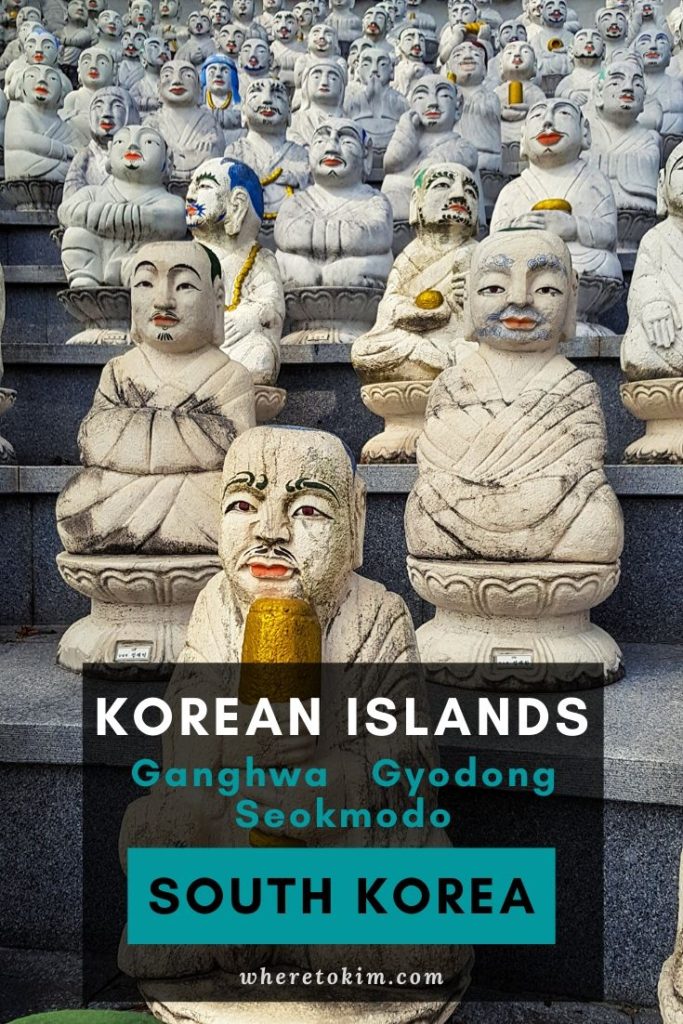Visit the islands Ganghwa, Seokmodo and Gyodong as a weekend trip from Seoul in South Korea. Three quiet islands connected by bridge to the mainland with an abundance of culture, history, and good food.
How to get to Ganghwa, Seokmodo and Gyodong
Ganghwa, Seokmodo and Gyodong are three islands just west of Seoul, across the bridge from Gimpo. They are ideally situated far away from the bustling metropole to preserve the quiet ‘holiday’ feeling but close enough that you can reach them within two hours from the city center of Seoul.
The best way to get to Ganghwa, Seokmodo and Gyodong is by car. While it is possible to explore Ganghwa by bus, this is not practical for the other two islands. Plus it wouldn’t be possible to visit the must-see places within a few days. Check out the itinerary for my second South Korea roundtrip focusing on the south and west (islands and peninsulas like Ganghwa!) for a good route.
By car
You can reach Ganghwa-eup on Ganghwa Island in an hour and a half by car from city hall in Seoul. From Ganghwa-eup you can drive in 45 minutes to Bomunsa temple on Seokmodo Island and in half an hour to the center of Gyodong Island.
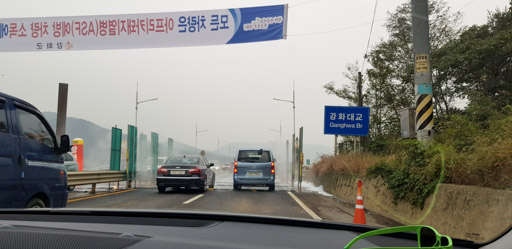
If you are coming directly from Incheon airport: Ganghwa is only a 30-40 minute drive from Incheon airport.
Upon crossing the bridge from Gimpo to Ganghwa, your car gets an anti-epidemic car wash to protect the agriculture on the island. Motorcyclists too!
By bus
The fastest way to Ganghwa is to get on a bus near Hongik University in Hongdae, Seoul. A direct bus can take you to Ganghwa-eup in an hour and 45 minutes. From Ganghwa-eup you can take other buses to Seokmodo Island and Gyodong Island.
Where to stay on Ganghwa Island?
The following hotel is not really a recommendation, but I wanted to share my experience.
I stayed at Docking Hotel just across the bridge from Ganghwa (so in Gimpo actually) because of its location, closeness to restaurants and good price. The hotel itself was ok but had just changed ownership and only accepted cash. Also, the location on Agoda isn’t accurate (it is actually a five minutes’ drive further east) and it took some time to find the hotel. Only stay at this hotel if you use KakaoMap for navigation.
If I visit Ganghwa again I’ll probably try Everrich Hotel; a hotel I also considered for my first trip but didn’t end up staying at because I preferred a hotel closer to the airport.
Ganghwa Island (강화도)
Ganghwa Island is connected to the mainland by bridges. This island played a key role in opening Korea to the world. From the northern tip of Ganghwa, you can see North Korea.
There are many historic sites that were originally used in the defense of Ganghwa and Korea. You probably don’t want to visit all of them and instead choose to spend more time at some of the sites to also enjoy the area surrounding it.
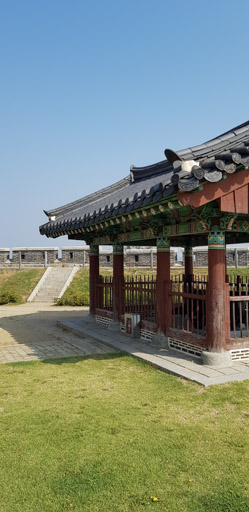
Visit (one of) the fortresses Deokjinjin (mid), Gwangseongbo (north) and Chojijin (south). Of these three, Deokjinjin is the most interesting fort because there is more to see.
Chojijin (강화 초지진)
Chojijin Fortress was built in 1655 (assumedly) to defend against coastal attacks. Here Joseon fought against America and Japan in the 1970s. In 1876 a Japanese warship, the Unyangho, invaded and forced Joseon to open its port to the world. The fortress was almost completely destroyed, though the cannons that were used in the battles remain at the site. In 1973 the fortress got restored.
Chojijin is only a small site, but it is a nice introduction to Ganghwa Island as it is just across the bridge from Gimpo on the southern side of the island.
Location: 624 Choji-ri, Gilsang-myeon, Ganghwa-gun, Incheon, South Korea
Deokjinjin (덕진진)
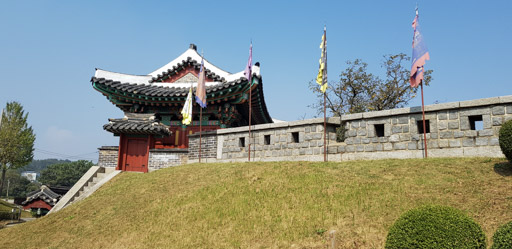
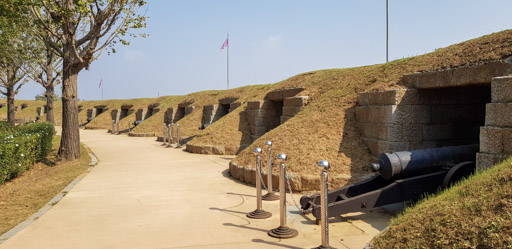
Deokjinjin Fortress was of strategic importance for the defense of the Ganghwa straits. Here, the army of Yang Yeon-su defeated a French army in 1866. At Deokjinjin you can see Namjang fort, Namjang Battery and Deokjin-don.
Do also walk past the battery and climb the stairs to see the small fort on the hill.
Location: 846 Deokseong-ri, Buleun-myeon, Ganghwa-gun, Incheon, South Korea
Ganghwa Royal Palace (강화 고려궁지)
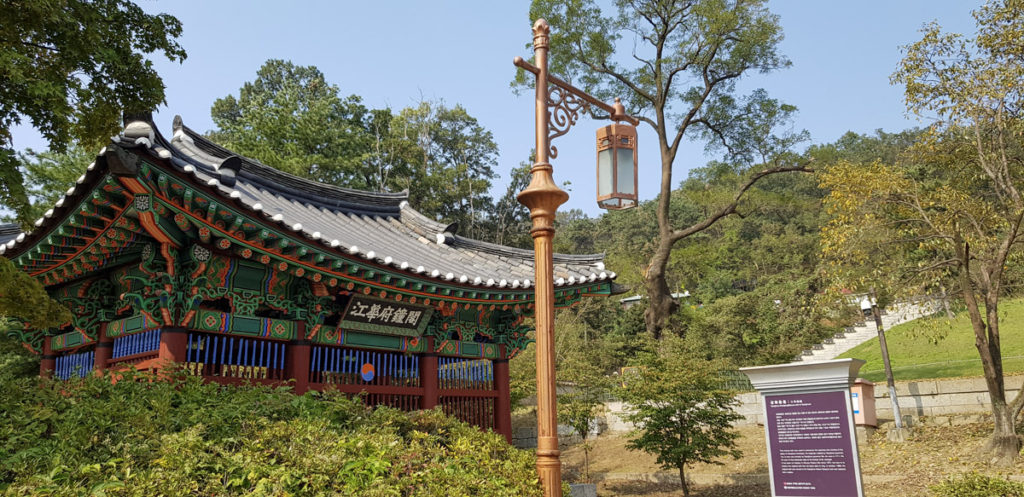
This palace was built when the capital of Goryeo was moved to Ganghwa from Gaeseong in 1232. After 39 years, the capital was moved back to Gaeseong and the palace and castle were demolished. In the Joseon Period, the Yusu-bu Government Office, Ibangcheong (Department of Secretary and Personnel), Oegyujanggak (Subsidiary royal library), Jangnyeonjeon Hall, Mannyeongjeon Hall were added as well as a temporary palace where the king could stay.
Most were destroyed during the Manchu War in 1636 and a fight with French Forces in 1866. This site was designated as a Historic site in 1964 and restored in 1977.
Location: 42 Bungmun-gil, Ganghwa-eup, Ganghwa-gun, Incheon, South Korea
Anglican Church (대한성공회 강화성당)
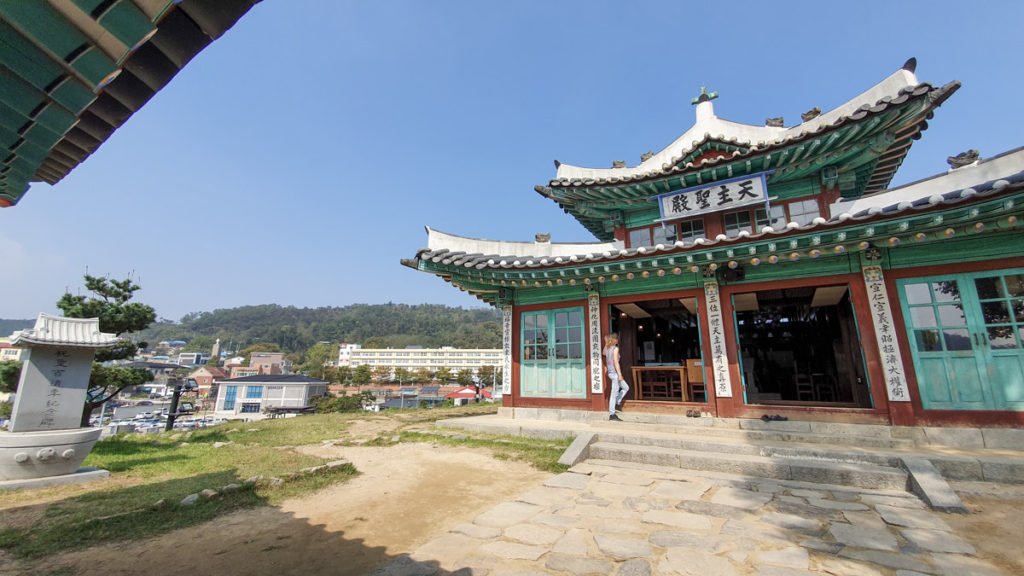
In the middle of Ganghwa-eup, just below the Royal Palace and above the Yongheunggung Royal Residence, you can visit the Anglican Church (in Hanok style!).
Location: 22 250-0 Gwancheong-ri, Ganghwa-eup, Ganghwa-gun, Incheon, South Korea
Yongheunggung Royal Residence (용흥궁)
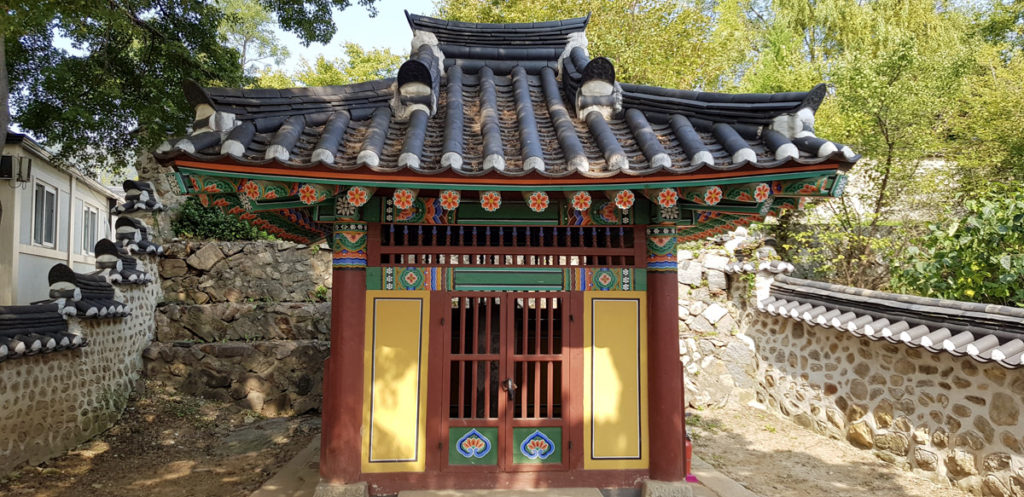
From the Anglican Church, you can follow a small path down to the Yongheunggung Royal Residence. Here you can see some historical buildings surrounded by modern houses.
Location: 441 Gwancheong-ri, Ganghwa-eup, Ganghwa-gun, Incheon, South Korea
Ganghwa Dolmen (강화 부근리 지석묘)
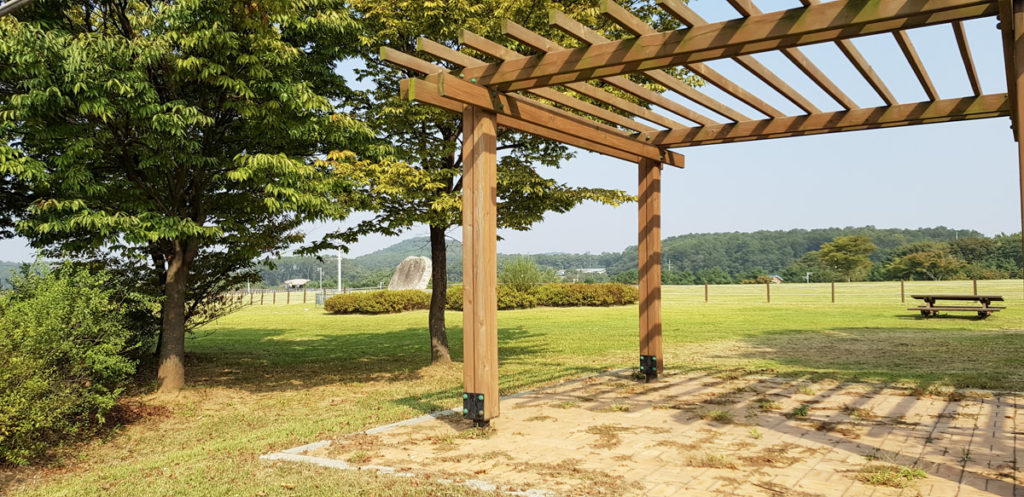
Next up is Ganghwa Dolmen; a well-advertised place where you can see dolmens. A dolmen is a type of megalithic tomb constructed during the Bronze Age. About 40% of the world’s dolmens are located on the Korean peninsula. Ganghwa Island has about 160 dolmens, of which 70 were included on the World Heritage List.
Skip this stop if you want to win some time (or simply take a picture of the dolmen from beyond the gate). There is a more interesting (and less touristic) dolmen site at Osang-ri further south.
Location: 317 Bugeun-ri, Hajeom-myeon, Ganghwa-gun, Incheon, South Korea
Hwamunseok Cultural Centre (강화화문석문화관)
If you like museums you can visit Hwamunseok Cultural Centre to learn more about how the people of Ganghwa lived long ago.
Location: 630-1 Yango-ri, Songhae-myeon, Ganghwa-gun, Incheon, South Korea
Ganghwa Peace Observatory (강화 평화전망대)
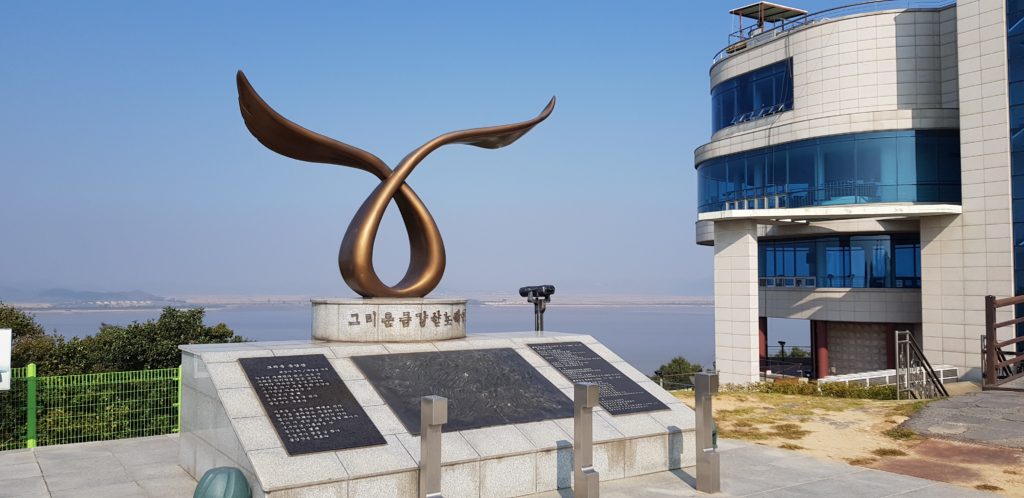
Drive further north on one of the smaller roads for a nice view of the rice fields and farms until you get to Ganghwa Peace Observatory at the northernmost part of the island to look at North Korea with binoculars. On your way to the observatory, you have to check-in at an army post to receive your visitor card which you have to return on the way back. When we got there the soldiers were very excited to see some foreigners. You have to follow the same procedure on your visit to the island Gyodong.
Location: 산6-1 Cheolsan-ri, Yangsa-myeon, Ganghwa-gun, Incheon, South Korea
Dolmens of Osang-ri (강화오상리고인돌군)
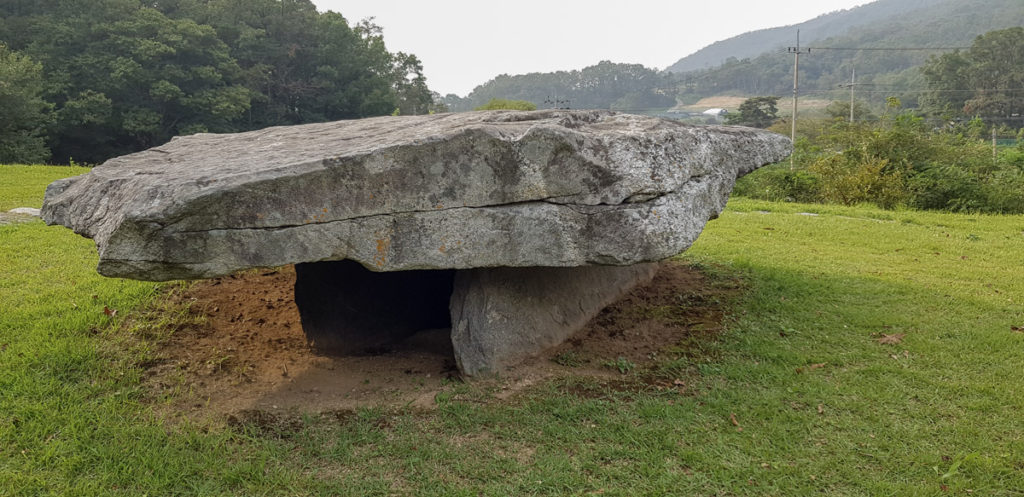
In the middle of Ganghwa Island, you can visit the lesser-known dolmen site. There are 12 dolmens in this area and all of them were built in the northern style.
This dolmen is a table type dolmen with upright stone slabs covered by a wide, flat capstone to create an above-ground burial chamber. Various artifacts, including stone knives, stone arrowheads, and plain, undecorated pottery were excavated from this dolmen. These finds are considered important as they suggest that Ganghwa Island has been inhabited by people since the Old Stone Age.
Location: PCJ2+8V Ganghwa-gun, Incheon, South Korea
Ganghwa Arimae World (강화아르미애월드)
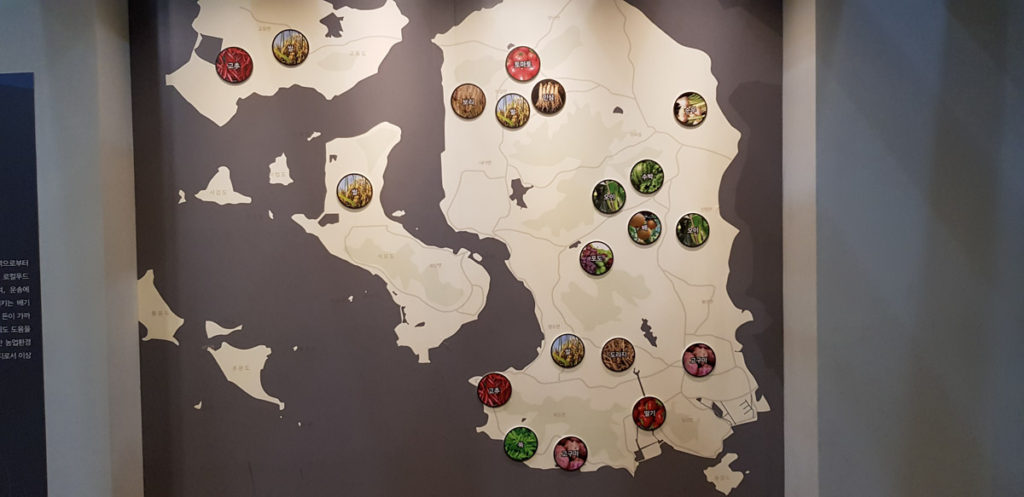
Ganghwa Arimae World is a museum about the agriculture industry on Ganghwa Island. The museum is in Korean only but has many pictures that show you part of the story. For instance, you can see which vegetables and spices are grown on Ganghwa, Gyodong, and Seokmodo. You probably saw many of them on the farms you passed on your Ganghwa road trip. The restaurant inside serves a very good mudfish soup!
For kids, there is a maze and playground outside.
Location: PC3P+46 Ganghwa-gun, Incheon, South Korea
Jeondeungsa Temple (강화도 전등사)
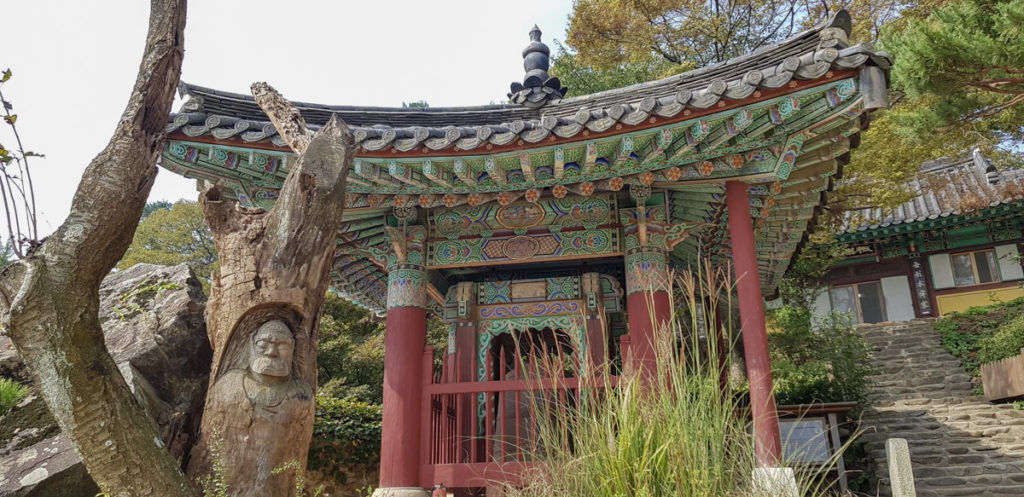
Visit Jeondeungsa Temple in the southern part of Ganghwa for a walk around the temple grounds and some traditional tea with a rice cake mugwort snack. Jeondeungsa Temple is located at Samnangseong Castle, which was built by the founding father of Korea, Dangun, and his three sons. At Samnangseong you can see Nammun, Dongmun, and Seomun; the gate towers in the south, east, and west. At Jeondeungsa the Ganghwa Righteous Army won a battle against the Japanese in 1908.
At the site, you can see the remnants of Jeongjoksanseong Fortress, an army base that was installed to guard the Jeongjoksan Archives of ‘Joseonwang-josillok: The Annals of the Joseon Dynasty’. This fort was destroyed by arson in 1907 and you can only see some stones in the grass where the walls and gates used to be.
If you feel active you can walk up the stairs near the entrance of the temple to get a nice view of the island and the temple grounds from above.
Location: 37-41 Jeondeungsa-ro, Gilsang-myeon, Ganghwa-gun, Incheon, South Korea
Huaedondae fort (후애돈대)
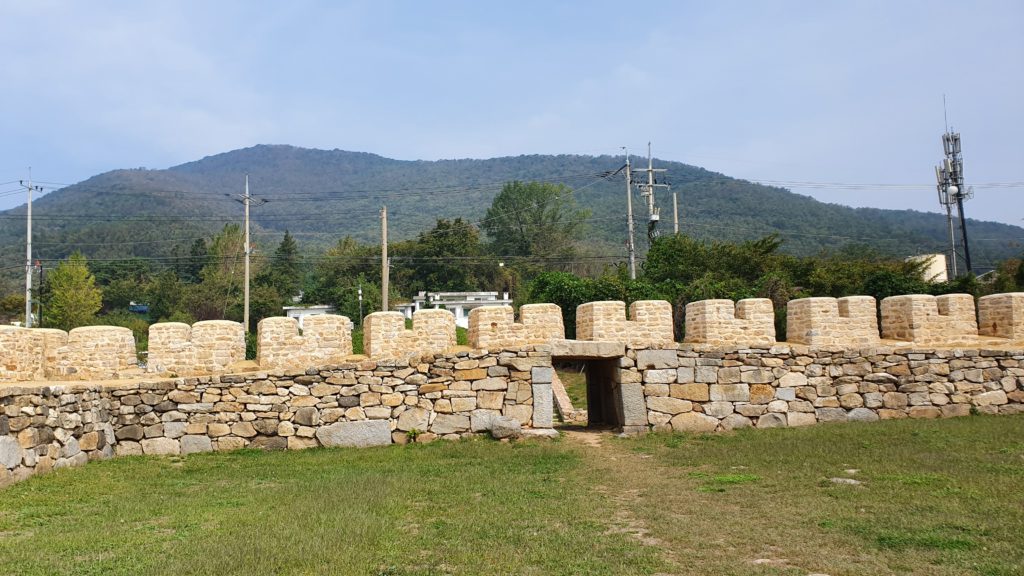
After your visit to the temple, head south for a quick stop at Huaedondae fort and a view of the ocean mud.
This military outpost, called dondae in Korean, was used to monitor the enemies’ movements and to stand guard against unauthorized intrusions and surprise attacks. In 1679, during the Joseon dynasty, 48 outposts with artillery were constructed on the coast of Ganghwa Island.
Huaedondae was one of the outposts of Seondubo Fort. Its stone walls form a rectangular shape. Only some parts of the low walls, which shielded soldiers during battle, remain above the main structure.
Location: 954 Seondu-ri, Gilsang-myeon, Ganghwa-gun, Incheon, South Korea
Chamseongdan Altar (강화 참성단)
Chamseongdan Altar is located on the northside of Manisan Mountain peak. This is where Dangun is said to have offered sacrifices to the heavens. The story of Dangun reads that he made sacrifices over 4,000 years ago, making this relic a historical treasure.
Manisan is the highest mountain on Ganghwa Island, rising about 495 meters above sea level. You can climb the summit for a nice view of the whole island.
Location: 산42-1 Heungwang-ri, Hwado-myeon, Ganghwa-gun, Incheon, South Korea
Gyodong Island (교동도)
Gyodong is a small island on the northwestern side of Ganghwa. Even Google hasn’t filmed the roads yet, so enjoy the sight. If you want a sneak preview, check out this area in KakaoMap.
Gyodong teahouse (교동다방) and Daeryong market (대룡시장)
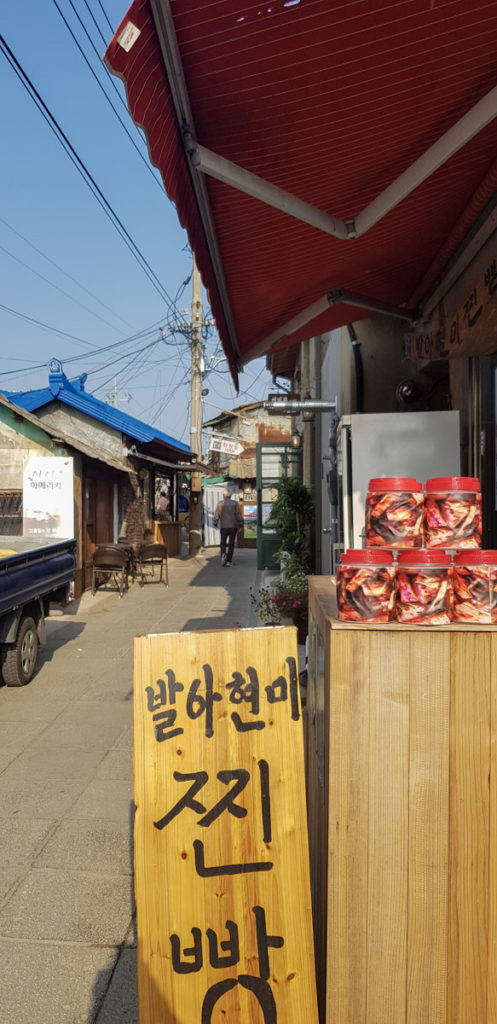
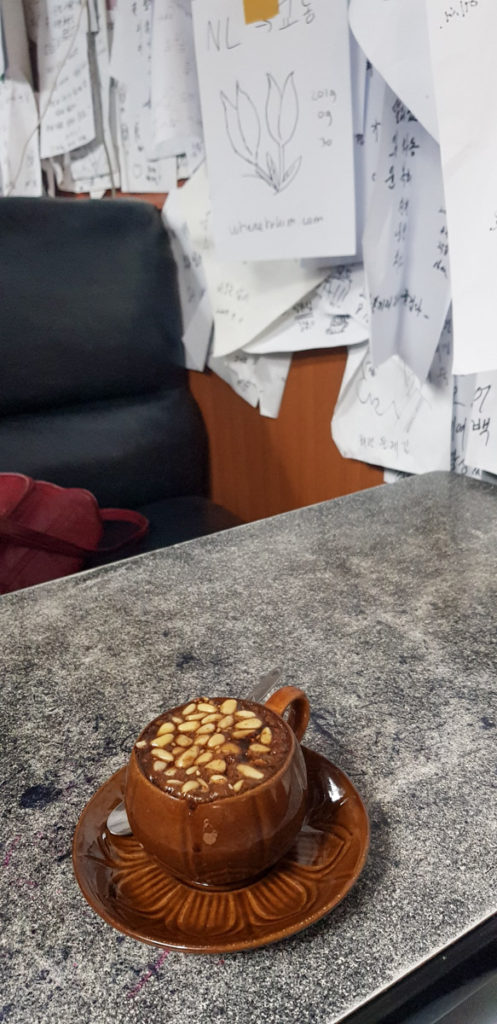
In the middle of Gyodong Island, you can visit Daeryong market at Gyodong-myeon. And with market I pretty much mean two streets that cross each other with small stores selling snacks and drinks.
This is one of the most authentic places to visit in South Korea. Time stood still on Gyodong Island. One day this market will lose its charm, but right now it is a lovely place to visit. There are no other tourists, the locals stare at you, but: they welcome your visit.
I had a traditional Korean tea with raw egg in the middle at a small tea house. We made small-talk with the host who was delighted that we could answer some of her questions (100% Korean) with a few words here and there. It was surprisingly easy as she really made an effort to understand us. She almost didn’t let us leave, cooking some eggs, bringing glasses of water, and taking pictures with us. In the picture above you can see my addition to the ‘wallpaper’ on behalf of WheretoKim.
Location: 508-2 Daeryong-ri, Gyodong-myeon, Ganghwa-gun, Incheon, South Korea
Gyodong Observatory (교동망향대)
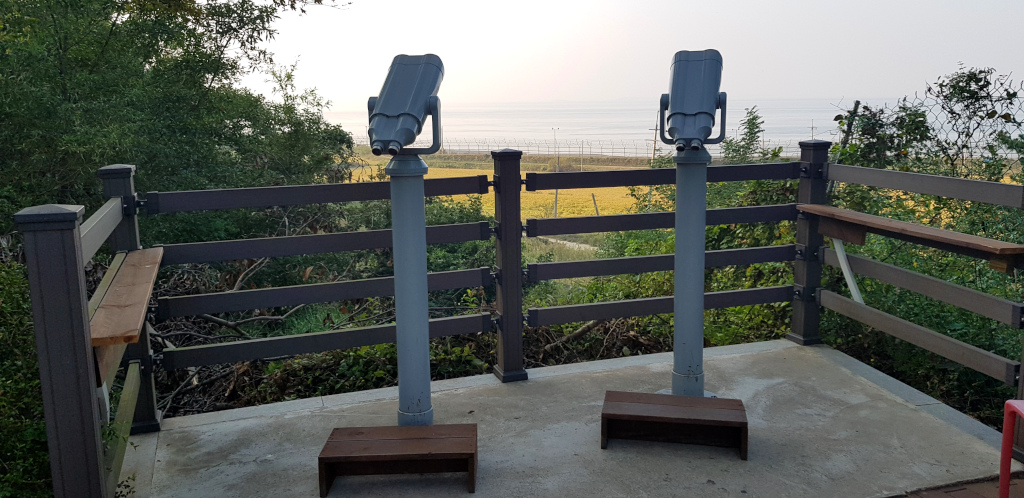
Another look at North Korea at Gyodong Observatory (meaning two wild binoculars). The road there though… you drive through small villages, past farms and even go beyond where the navigation can lead you. Just keep driving north and the road signs will guide you!
Location: R68Q+VQ Ganghwa-gun, Incheon, South Korea
Eumnaeri Monument (읍내리비석군)
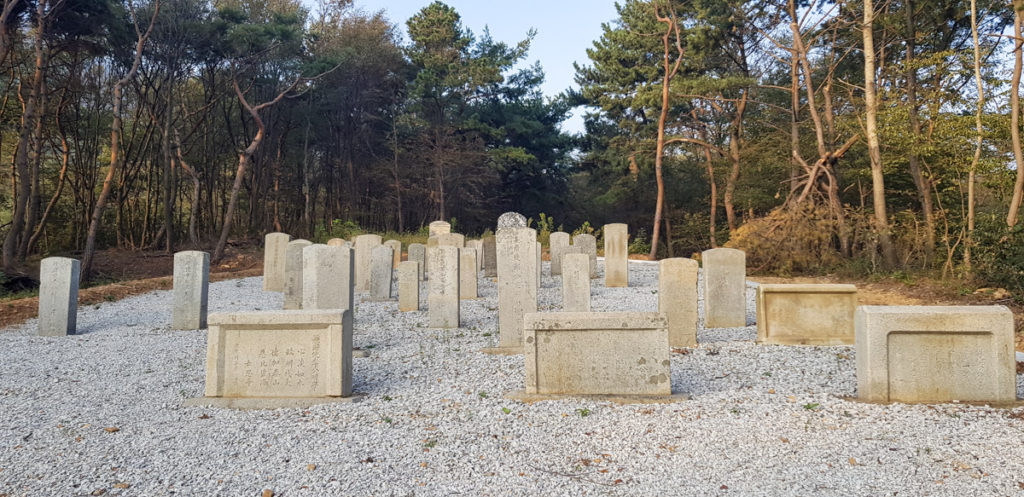
These 40 monuments were erected in memory of various officials who successively took the helm of the local authorities of the Gyodong region over the centuries. These monuments were originally scattered across Gyodong Island and were relocated here in 1991.
I am a bit confused about the location of these monuments on Google maps, as I remember them being closer to Gyodong Hanggyo. Anyway, they are hard to miss; you’ll see them on your way to Gyodong Hanggyo.
Location: Q7CW+JC Ganghwa-gun, Incheon, South Korea
Gyodong Hanggyo (교동향교)
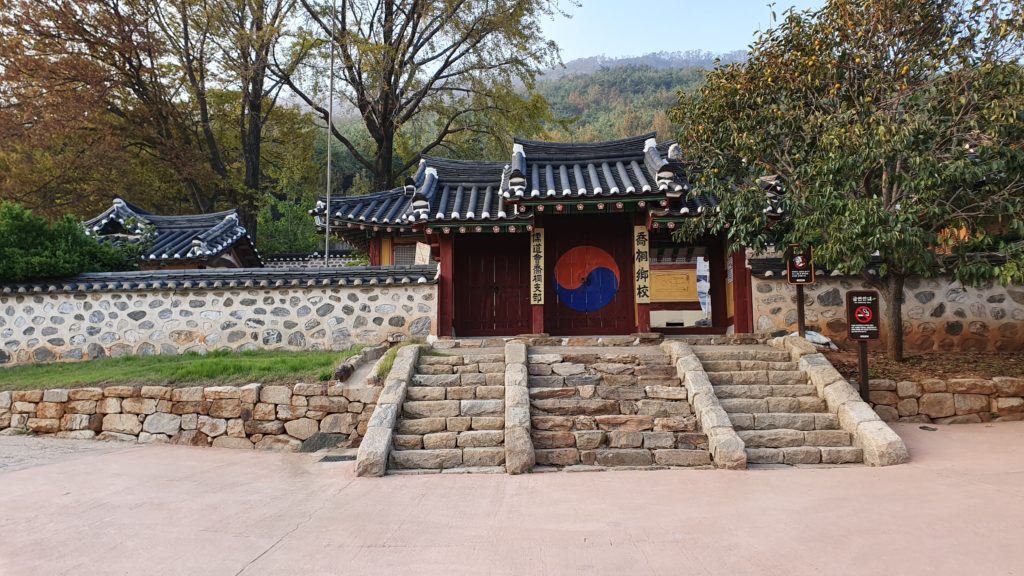
Gyodong Hanggyo is a beautiful building that is well preserved. During my visit, there were no other tourists there, which made it one of my favorite Confucian Schools I visited on my trip as I could feel the peace and quiet. On your way to the Hanggyo, you will pass fields with pink and white flowers (in the right season) and many persimmon trees.
A hanggyo is a local, public education institution of the Goryeo and Joseon periods. It is usually composed of a lecture hall and a shrine that enshrines the spirit tablets of Confucius and Confucian sages and scholars. In 1286, An Hyang, an eminent Confucian scholar of the Goryeo period, brought a portrait of Confucius from Yuan China and enshrined it in this Confucian School.
Gyodong Hanggyo was first established in 1127 to the north of Hwagaesan Mountain. In 1741 it was moved to its current location.
Location: 148 Eupnae-ri, Gyodong-myeon, Ganghwa-gun, Incheon, South Korea
Seokmodo Island (석모도)
Seokmodo (or Seongmodo) is another island with sights not yet spoiled on Google Maps by Google (it’s even keeping the bridge linking Seokmodo and Ganghwado secret). Use KakaoMap for a more recent view of the island.
That being said: Seokmodo is famous for its mineral springs that I decided to skip because of all the negative reviews (and some positive) I saw online. I just wanted to mention it, so that you are aware it exists.
Bomunsa Temple (보문사 강화)
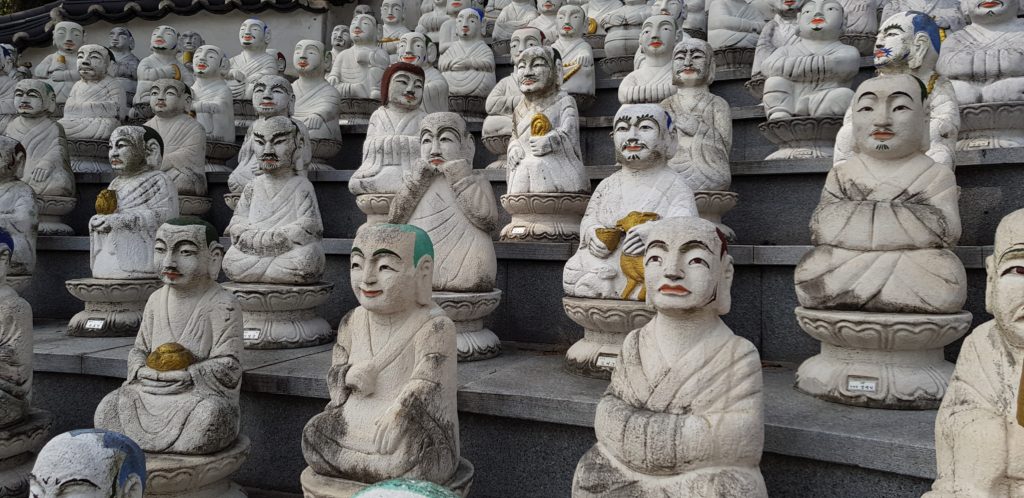
Bomunsa Temple is one of the eight scenic sites in the Ganghwa area. The temple is said to be built in 635 during the reign of the Silla Queen Seondeok. From the temple area you have a nice view of the sea and the view will only get better if you climb the stairs to the rock cave with the buddha statue.
The most eye-catching sight here is probably the gathering of Buddha disciples around a stone pagoda.
Location: 44 Samsannam-ro 828beon-gil, Samsan-myeon, Ganghwa-gun, Incheon, South Korea
Seokmodo Arboretum (석모도수목원)
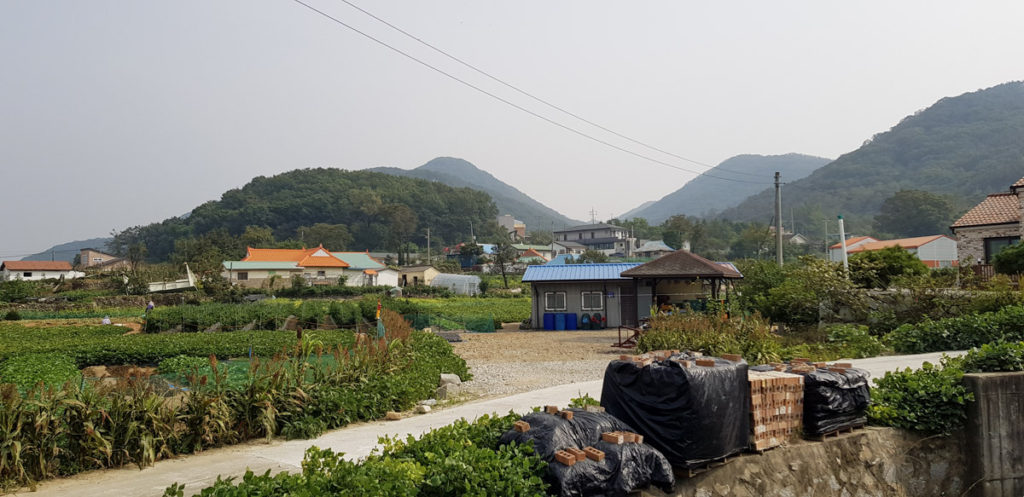
The photo above shows the road to Seokmodo Arboretum. As the roads were under construction and I didn’t have enough time to walk the distance to the entrance and explore the Arboretum before dark, I decided to return and visit a cafe instead. But if you have enough time, then the Seokmodo Arboretum looks like an interesting place to visit.
Location: 산133-2 Seongmo-ri, Samsan-myeon, Ganghwa-gun, Incheon, South Korea
Example itinerary
After visiting the highlights of South Korea on my first South Korea roundtrip, I explored the lesser-known parts (including Ganghwa) on my second trip. Check out this second itinerary focusing on the south and west (many islands!) of South Korea for ideas for your trip.
